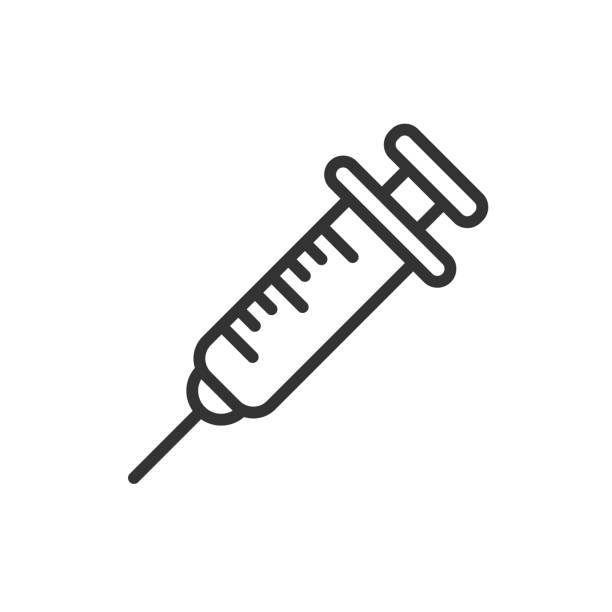Vancomycin Hydrochloride
Indications
Vancomycin is indicated in potentially life-threatening infections which cannot be treated with other effective, less toxic antimicrobial drugs including the penicillins and cephalosporins.
Vancomycin is useful in the therapy of severe staphylococcal infections in patients who cannot receive or who have failed to respond to the penicillins and cephalosporins or who have infections with staphylococci, resistant to other antibiotics.
Vancomycin is used in the treatment of endocarditis and as prophylaxis against endocarditis in patients undergoing dental or surgical procedures.
Its effectiveness has been documented in other infections due to staphylococci including osteomyelitis, pneumonia, septicemia and soft tissue infections.
Pharmacology
Vancomycin binds tightly to D-alanyl-D-alanine portion cell wall precursor causing blockage of glycopeptide polymerisation which produces immediate inhibition of cell wall synthesis and secondary damage to the cytoplasmic membrane.
Dosage And Administration
Concentrations of no more than 5 mg/ml and rates of no more than 10 mg/min are recommended in adults. In selected patients in need of fluid restriction, a concentration up to 10 mg/ml may be used.
Patients with Normal Renal Function:
- Adults: Usual daily dose is 2 gm (in 4 or 2 divided doses).
- Children: Total daily dose is 40 mg/Kg (in 4 divided doses).
- Infants and Neonates: An initial dose of 15 mg/Kg is suggested followed by 10 mg/Kg every 12 hours in the first week, then every 8 hours up to 1 month.
Patients with Impaired Renal Function and Elderly Patients: Dosage adjustment must be made in patients with impaired renal function. In premature infants and the elderly, dosage reduction may be necessary to a greater extent than expected because of decreasing renal function. If creatinine clearance can be measured or estimated accurately, the dosage for most patients with renal impairment can be calculated using the following chart-
- CrCl 100 ml/min: Vancomycin Dose 1545 mg/24 h
- CrCl 90 ml/min: Vancomycin Dose 1390 mg/24 h
- CrCl 80 ml/min: Vancomycin Dose 1235 mg/24 h
- CrCl 70 ml/min: Vancomycin Dose 1080 mg/24 h
- CrCl 60 ml/min: Vancomycin Dose 925 mg/24 h
- CrCl 50 ml/min: Vancomycin Dose 770 mg/24 h
- CrCl 40 ml/min: Vancomycin Dose 620 mg/24 h
- CrCl 30 ml/min: Vancomycin Dose 465 mg/24 h
- CrCl 20 ml/min: Vancomycin Dose 310 mg/24 h
- CrCl 10 ml/min: Vancomycin Dose 155 mg/24 h
The initial dose should be not less than 15 mg/kg even in patients with mild to moderate renal insufficiency. Above chart is not valid for functionally anephric patients. For such patients, an initial dose of 15 mg/kg of body weight should be given in order to achieve prompt therapeutic serum concentrations. The dose required to maintain stable concentrations is 1.9 mg/kg/24 h. Since individual maintenance doses of 250-1,000 mg are convenient, 1 dose may be given every several days rather than on a daily basis in patients with marked renal impairment. In anuria, a dose of 1000 mg every 7-10 days has been recommended. Intermittent infusion is the recommended method of administration. Intraperitoneal administration is not recommended.
Contraindications
Vancomycin is contraindicated in Patients with known hypersensitivity to Vancomycin.
Side Effects
Vancomycin is well tolerated. However during or soon after rapid infusion of Vancomycin, patients may develop anaphylactic reactions including hypotension, wheezing, dyspnoea, urticaria or pruritus. Rapid infusion may also cause flushing of the upper body ("red neck") or pain and muscle spasm of the chest and back. These reactions usually resolve within 20 minutes but may persist for several hours. Such events are infrequent if Vancomycin is given by a slow infusion over 60 minutes.
Pregnancy And Lactation
It is not known whether it causes foetal harm or not. Vancomycin should be given in pregnancy only if clearly needed and blood levels should be monitored carefully to minimise the risk of foetal toxicity.
Vancomycin Hydrochloride is excreted in human milk. Caution should be exercised when Vancomycin is administered to a nursing woman. It is unlikely that a nursing infant can absorb a significant amount of Vancomycin from its gastro-intestinal tract
Precautions And Warnings
Patients with borderline renal function and individuals over the age of 60 should be given serial tests of auditory function and of Vancomycin blood levels. All patients receiving the drug should have periodic haematological studies, urine analysis and renal function tests.
Vancomycin is very irritating to tissue and causes injection site necrosis when injected intramuscularly. It must be infused intravenously. Injection site pain and thrombophlebitis occur in many patients receiving Vancomycin and are occasionally severe.
Prolonged use of Vancomycin may result in the overgrowth of non-susceptible organisms. Careful observation of the patient is essential. If superinfection occurs during therapy, appropriate measures should be taken. In rare instances, there have been reports of pseudomembranous colitis due to C. difficile, developing in patients who received intravenous Vancomycin.
Overdose Effects
Supportive care is advised with maintenance of glomerular filtration. Vancomycin is poorly removed from the blood by haemodialysis or peritoneal dialysis. Haemoperfusion with Amberlite resin XAD-4 has been reported to be of limited benefit
Therapeutic Class
Other antibiotic.
Storage Conditions
Store in a cool and dry place, protected from light. Keep out of reach of children.
